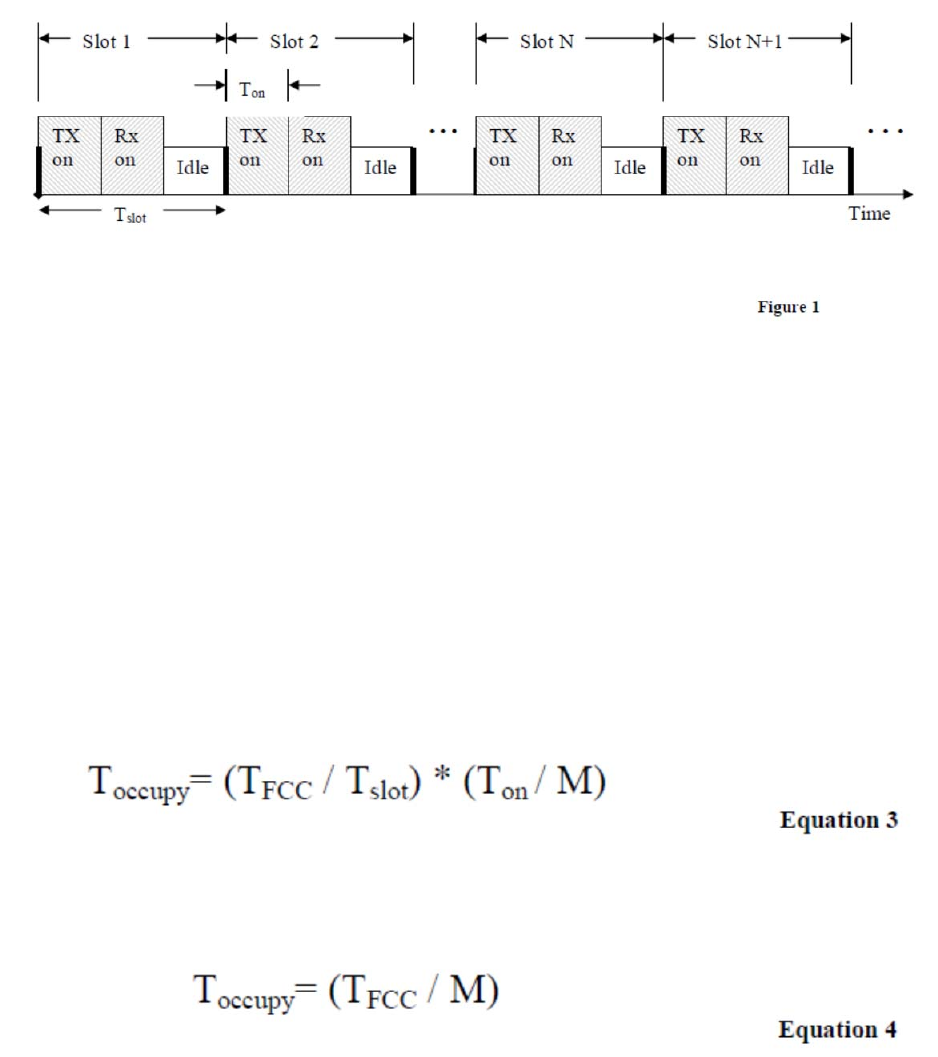User's Manual

Average time of occupancy
Under no circumstances will this scheme result in violation of the FCC maximum for average
time of occupancy on a given channel. The period of interest for the FCC is 10 seconds. Average
time of occupancy on a channel may be calculated as follows.
1. Let T
FCC
be the period of interest for the FCC rules. (T
FCC
= 10 seconds.)
2. Calculate the # of hops, N
hops
, of the hop table in the period of interest. N
hops
= T
FCC
/ T
slot
3. Divide the number of hops through the table, N
hops
, by the number of unique frequencies in the
hop table (M), to find the average number of hops on a given channel. N
onechannel
= N
hops
/ M.
4. Multiply the number of hops on a given channel by the transmitter ON time, T
on
, to find the
average Time of Occupancy (T
occupy
)on a given channel in the period of interest. T
occupy
=
N
onechannel
* T
on
Taken together,
In the limiting case of streaming data T
on
= T
slot,
the terms cancel, and
Equation 3
reduces
to
To meet the requirements of section 15.247 (a)(1)(i) off the FCC requirements, it is required that
systems in the band 902-928 MHz with bandwidths >= 250 kHz shall not occupy a given
channel any more than an average of 0.4 seconds in a 10 second window.
In the table below, the Average Time of Occupancy is calculated for representative numbers of
channels. For the DX180 system, the minimum number of channels is 26 (lower numbers of
channels being worst case for Average Time of Occupancy), and the maximum available pool of
channels is 64.







